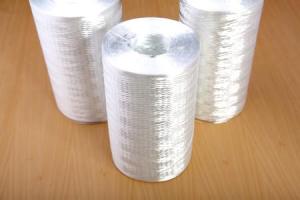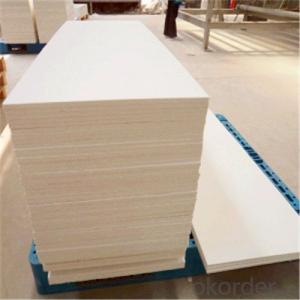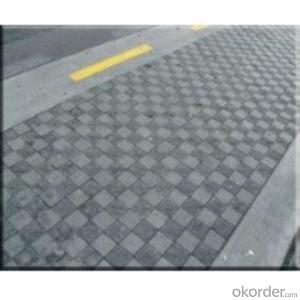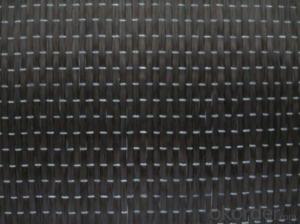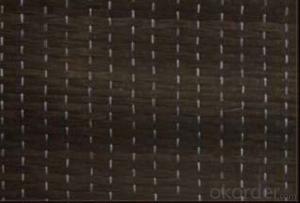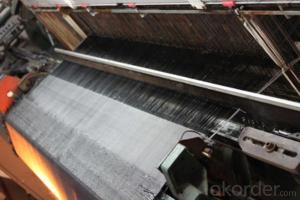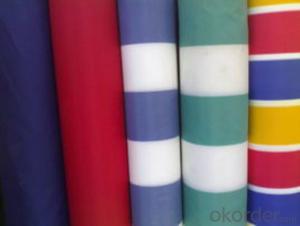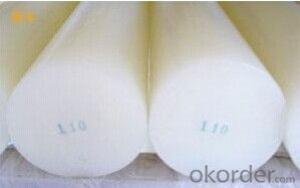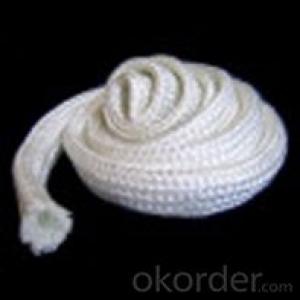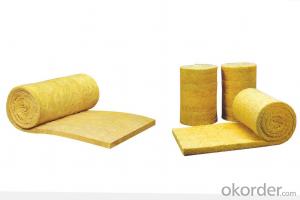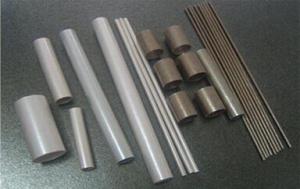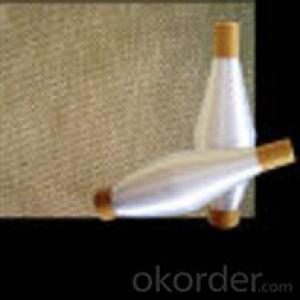Textured Fiberglass Yarn
- Loading Port:
- China Main Port
- Payment Terms:
- TT or L/C
- Min Order Qty:
- 10 Tons kg
- Supply Capability:
- 2*20FCL Per Month kg/month
OKorder Service Pledge
OKorder Financial Service
You Might Also Like
General Information of Textured Fiberglass Yarn
CMAX textured fiberglass textiles are made from textured E-glass fiber yarn which features bulky and resilient with high thermal insulation property. Diversified forms are available such as yarn, cloth, tape, rope, sleeving, etc.
Application of Textured Fiberglass Yarn
Textured fiberglass textiles are cost effective products used at high temperature up to 550º C. It exhibits properties of low thermal conductivity, electricity insulation and corrosive resistance.
Textured fiberglass textiles can be performed in process industries as fire curtains, gaskets or sealing in kiln, furnace or heaters etc. Application has been extended to the building industry as reinforcement material.
Chemical Analysis
SiO2: 54.1%
Al2O3: 14.6%
CaO: 16.6%
MgO: 4.6%
B2O3: 8.8%
Na2O+K2O: ≤ 0.8%
Fe2O3:<0.5%

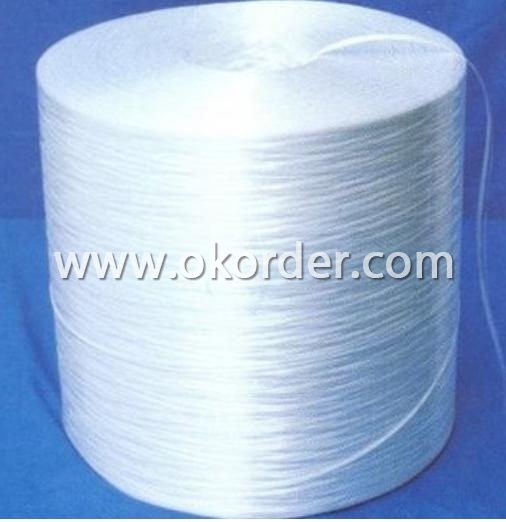
- Q:Can glass fiber textiles be used for insulation in appliances?
- Glass fiber textiles, comprised of fine strands of glass woven or knitted into fabric, serve as effective insulation in appliances. Their thermal insulation properties make them ideal for appliances that require temperature control. These textiles are commonly utilized in appliances such as ovens, refrigerators, and water heaters to prevent heat loss or gain. By creating a barrier between the appliance's interior and exterior, glass fiber textiles improve energy efficiency and reduce energy consumption. Additionally, these textiles possess other advantageous qualities that make them suitable for appliance insulation. They are fire-resistant, a crucial attribute when high temperatures are involved. Moreover, they exhibit resistance to chemicals and moisture, ensuring long-lasting insulation performance. Furthermore, these textiles are lightweight and flexible, making them easy to install in appliances of varying shapes and sizes. They can be effortlessly cut and molded to meet the specific insulation requirements of different appliances. In conclusion, glass fiber textiles are a fitting choice for appliance insulation. Their thermal insulation properties, fire resistance, chemical and moisture resistance, as well as their flexibility and ease of installation, contribute to their popularity in achieving effective insulation in various appliances.
- Q:Can glass fiber textiles be used in spacecraft components?
- Yes, glass fiber textiles can be used in spacecraft components. They offer lightweight and strong materials that can withstand extreme temperatures and provide insulation.
- Q:How do glass fiber textiles contribute to chemical resistance?
- Glass fiber textiles contribute to chemical resistance due to the inherent properties of glass. Glass fibers are highly resistant to the corrosive effects of chemicals, acids, and alkalis, making them an excellent choice for applications where chemical resistance is required. The tightly woven structure of glass fiber textiles provides a barrier against chemical penetration, preventing damage and degradation to the underlying materials. Additionally, glass fibers do not absorb or react with most chemicals, making them highly durable and suitable for use in harsh chemical environments.
- Q:Can glass fiber textile be used in furniture?
- Yes, glass fiber textile can be used in furniture. It is a versatile material that offers several benefits such as strength, durability, and resistance to heat and moisture. Glass fiber textile can be used in various furniture components like upholstery, cushions, and reinforcement structures, providing added support and longevity to the furniture.
- Q:I am producing 04 cloth of glass fiber. I want to know how to sell it
- Glass cloth is mainly used for the production of a variety of electrical insulation laminates, printed circuit boards, vehicle bodies, tanks, boats, mould etc.. Glass cloth is mainly used for the production of plastic packaging cloth, as well as for corrosion resistant occasions.
- Q:Can glass fiber textiles be used for making insulation boards or panels?
- Yes, glass fiber textiles can be used for making insulation boards or panels. Glass fiber textiles have excellent thermal insulation properties, making them a suitable material for insulation applications. The fibers are woven or compressed together to form boards or panels that can effectively trap and reduce heat transfer, providing insulation in various industries and construction projects.
- Q:Can glass fiber textiles be used in the agriculture industry?
- Glass fiber textiles have a wide range of uses in the agriculture industry. They possess several advantageous properties that make them suitable for various agricultural applications. One such application is in the construction of greenhouses. Glass fiber textiles can be utilized as a reinforcement material for greenhouse structures, providing them with strength and durability. Due to their high tensile strength, they can withstand wind loads, ensuring the longevity and stability of the greenhouse. Additionally, glass fiber textiles are resistant to corrosion and UV radiation, which are common issues in agricultural environments. Another use for glass fiber textiles is as a substitute for traditional plastic mulch films. Plastic mulch films have long been utilized in agriculture for weed control, moisture conservation, and soil temperature regulation. However, these films are non-biodegradable and contribute to environmental pollution. Glass fiber textiles offer a sustainable alternative as they are biodegradable and degrade naturally over time, reducing their environmental impact. Glass fiber textiles can also be employed in the production of agricultural shade cloth. Shade cloth is used to shield crops from excessive sunlight, preventing sunburn and promoting healthy plant growth. Glass fiber textiles can provide effective shading while still allowing sufficient airflow and light transmission, ensuring optimal growing conditions for crops. Additionally, glass fiber textiles find utility in the manufacturing of agricultural nets and screens. These nets and screens are used to protect crops from pests, insects, and birds, minimizing crop damage and increasing yield. The strength and durability of glass fiber textiles make them effective barriers against these threats, providing a protective shield for crops. In conclusion, glass fiber textiles have a multitude of applications in the agriculture industry. Their strength, durability, resistance to environmental factors, and biodegradability make them suitable for greenhouse construction, mulching, shading, and crop protection. By utilizing glass fiber textiles, the agriculture industry can benefit from sustainable and efficient solutions for various agricultural challenges.
- Q:Can glass fiber textiles be used for architectural applications?
- Indeed, glass fiber textiles have the capability to be utilized in architectural applications. These textiles, commonly referred to as fiberglass textiles, possess a wide range of advantages for architectural projects. To begin with, the lightweight nature of glass fiber textiles makes them suitable for applications where weight is a concern. This allows architects to incorporate them into various architectural elements, such as roofs, facades, and interior partitions, without burdening the structure with excessive load. Moreover, glass fiber textiles exhibit remarkable durability and resistance to environmental factors. They demonstrate high resistance to moisture, chemicals, and UV radiation, rendering them ideal for outdoor applications. Additionally, glass fiber textiles possess favorable fire resistance properties, which play a pivotal role in ensuring the safety of architectural structures. Furthermore, glass fiber textiles offer a great deal of design flexibility. They can be effortlessly molded into different shapes and forms, enabling architects to create distinctive and innovative architectural features. Furthermore, glass fiber textiles can be manufactured with diverse surface finishes and colors, providing architects with a vast range of aesthetic options. Furthermore, glass fiber textiles are renowned for their superb thermal and acoustic insulation properties. This makes them suitable for applications that prioritize energy efficiency and soundproofing, such as sustainable building construction or areas sensitive to noise. In conclusion, the utilization of glass fiber textiles in architectural applications is indeed possible. Their lightweight nature, durability, design flexibility, thermal and acoustic insulation properties, and resistance to environmental factors make them an invaluable material choice for architects across a variety of architectural projects.
- Q:Are glass fiber textiles resistant to bacterial growth?
- Yes, glass fiber textiles are generally resistant to bacterial growth. Glass fibers are made of inorganic materials, which do not provide a suitable environment for bacteria to thrive. Additionally, the smooth and non-porous surface of glass fibers makes it difficult for bacteria to adhere and multiply. This inherent resistance to bacterial growth makes glass fiber textiles a popular choice in industries where hygiene and cleanliness are crucial, such as healthcare, food processing, and aerospace. However, it is important to note that while glass fiber textiles are resistant to bacterial growth, they may still collect dust or other organic matter which can potentially support bacterial growth if not properly cleaned and maintained.
- Q:Can glass fiber textile be used in boat hulls?
- Yes, glass fiber textile can be used in boat hulls. Glass fiber textiles, also known as fiberglass, are commonly used in boat construction due to their high strength-to-weight ratio, durability, and resistance to corrosion. The fiberglass is typically laid up in layers and impregnated with a resin, forming a strong and rigid structure that can withstand the forces and stresses experienced in marine environments. The use of glass fiber textiles in boat hulls allows for lighter and more efficient designs, resulting in improved performance and fuel efficiency. Additionally, fiberglass is relatively easy to repair and maintain, making it a popular choice for boat builders and owners.
1. Manufacturer Overview |
|
|---|---|
| Location | |
| Year Established | |
| Annual Output Value | |
| Main Markets | |
| Company Certifications | |
2. Manufacturer Certificates |
|
|---|---|
| a) Certification Name | |
| Range | |
| Reference | |
| Validity Period | |
3. Manufacturer Capability |
|
|---|---|
| a)Trade Capacity | |
| Nearest Port | |
| Export Percentage | |
| No.of Employees in Trade Department | |
| Language Spoken: | |
| b)Factory Information | |
| Factory Size: | |
| No. of Production Lines | |
| Contract Manufacturing | |
| Product Price Range | |
Send your message to us
Textured Fiberglass Yarn
- Loading Port:
- China Main Port
- Payment Terms:
- TT or L/C
- Min Order Qty:
- 10 Tons kg
- Supply Capability:
- 2*20FCL Per Month kg/month
OKorder Service Pledge
OKorder Financial Service
Similar products
New products
Hot products
Hot Searches
Related keywords

